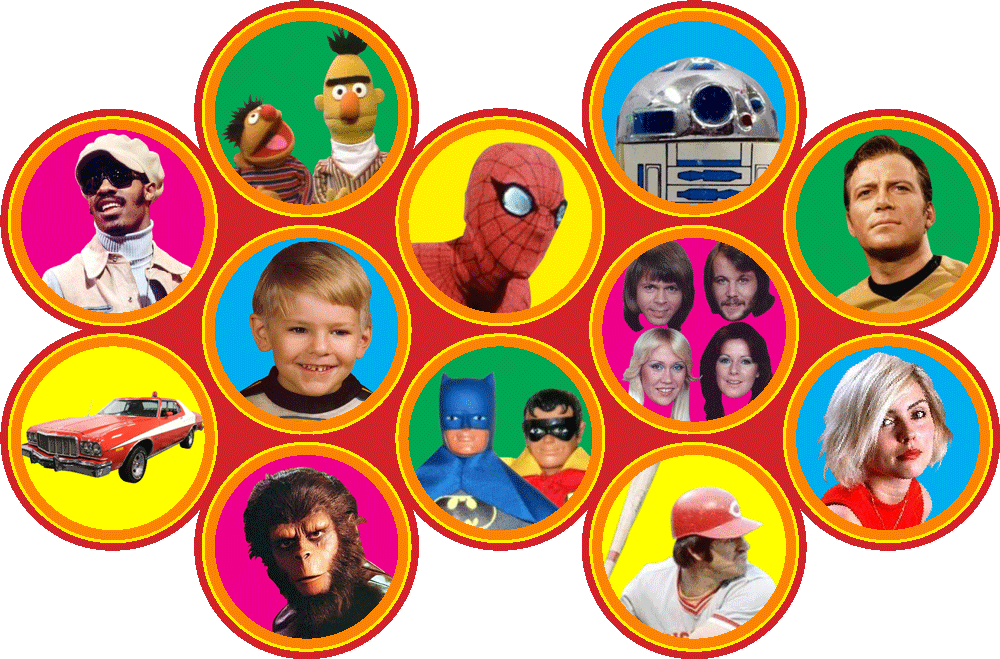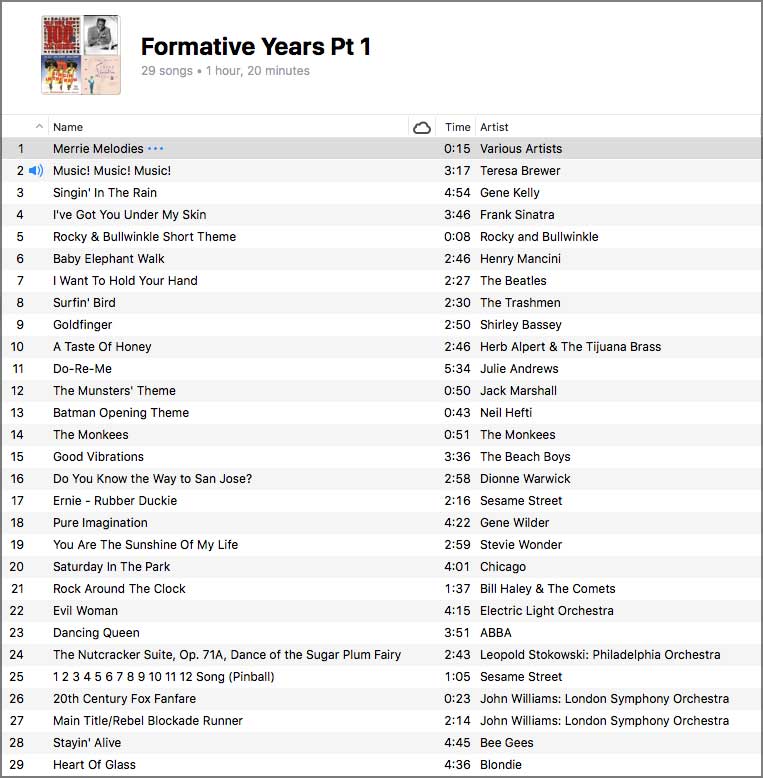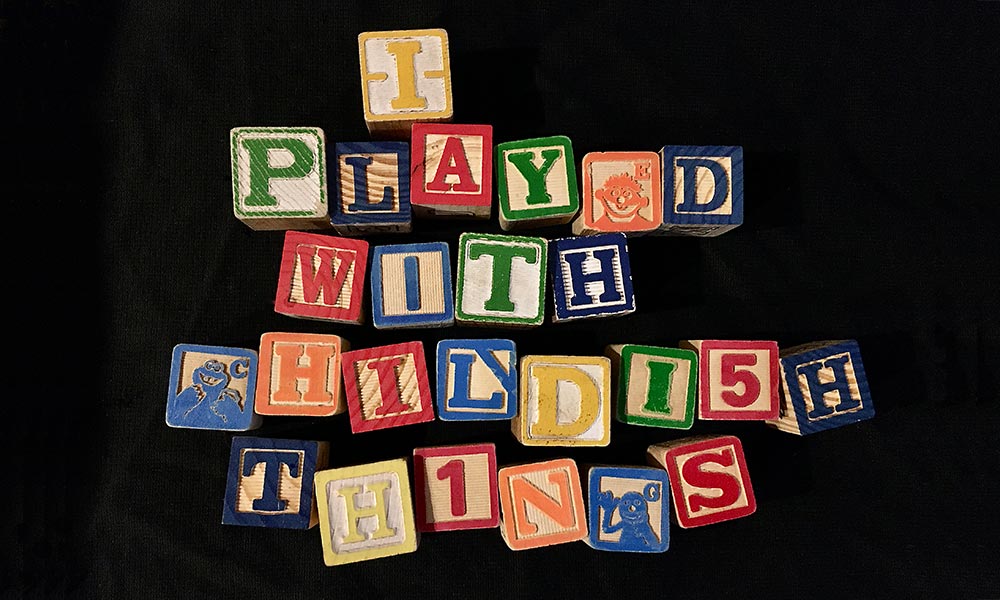
THE FORMATIVE YEARS PART IV
Aaaaaaaand I’m back. Picking up with more childhood reminiscences of media and life in the 1970s, today’s edition of The Formative Years concerns the so-called frivolous stuff that mattered most to me in my earliest years: toys, superheroes, and cartoons.
THE DETAILS OF MY LIFE ARE QUITE INCONSEQUENTIAL…
Born into the same vanilla-white porch community that fostered my parents, my early childhood was old-fashioned – even by 1970s standards. Big Sunday dinners with family were a regular occurrence. I rarely met anyone whose overall complexion deviated much from my own. Nor did I attend any manner of pre-school before kindegarten, structured or otherwise. So, for three years, with all my older siblings in school by fall of ’74, I luxuriated as the only “need machine” at home to be tended-to.
Ahhhhh, the salad days were all about balance. On one hand was quality time with Mom – wearing out favored books (Green Eggs and Ham), taking walks through town, berry picking (family dogs in tow), trips to the park, and mid-day naps. But I also had abundant, glorious “me” time. In the cozy, semi-confined toy cubby at the top the basement steps I was a scientist! Twiddling knobs on a massive control panel (letter blocks on a shelf) while observing my monitor (Lite Brite), I invented secret formulas (spent perfume sample flasks) and solved great problems (nope-definitely don’t drink that) . Additionally, profuse periods were allocated to activities that allowed for play and passive audio-visual data overload via TV. As a result, the worst of my damage was usually confined to the living room.

Being a junior member of a large family, my playthings were an innumerable mix of personal toys and hand-me-downs. I remember copious quantities of Fisher Price swag, Legos, and little green army men. The 12” G.I. Joes, Tonka trucks, and Matchbox cars were were cool. Book and record sets were fun. And, of course, we had a massive coffee tin cache of crayons that had seen better days.
THE WORLD’S GREATEST SUPERHEROES
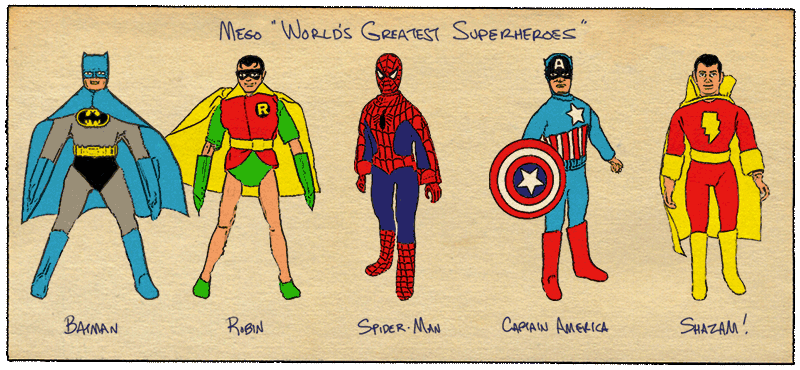
Of all the actual toys in the house arsenal, however, my favorites at that time had to have been my brother’s Mego “World’s Greatest Superheroes” dolls.
Compared to the detailed, ‘roided out rendering of modern action figures, Megos were very basic, youngster-friendly representations. I didn’t care that Captain America and company didn’t look exactly like they did in comics or on TV… Fully posable, vibrantly colored, and clad in removable cloth costumes with vinyl/plastic accessories, they inspired epic adventure! I swapped costumes and examined every detail of each figure down to the manufacturer stamp. At Christmas time, I fantasized about new additions while browsing through holiday catalogs. Always game to make me laugh, my brother simulated fights by vocalized punching sounds and violently shaking the dolls back and forth – not great for their elastic binding, but very entertaining. Between the two of us, Mom grew very adept at repair (wink).
AND THEN… TRAGEDY!
Sadly, the Megos were stolen from my classroom cubby in 2nd grade. I guess I had it coming – Mom and Dad often warned me about taking personal items to school. Some lessons have to be learned the hard way, unfortunately. I held out hopes of restoring the collection for a while, but it was not to be. The Mego toy company collapsed in the early ’80s. I found a stray Hulk figure in a toy store clearance rack some time later, but that was it.
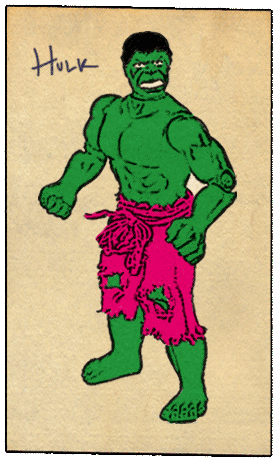
A NEW HOPE
Fast forward 30 years to a chance discovery at a local toy fair. Cutting right to the point, a friend invited me to a local show, so I rode along. Upon our arrival, I realized that the host venue was the site of the comic shows my brother and I frequented in the ’80s. Very cool. Things were looking up!
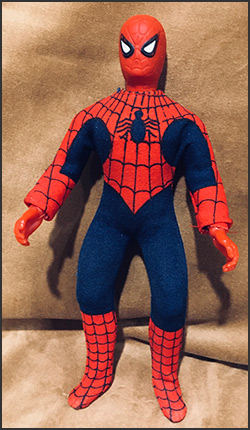
Then, as we entered the main show space from the lobby, something immediately caught my eye… Standing out amongst an otherwise common collection of trinkets, I found a really clean, loose vintage Mego Spider-Man – in a coffee mug! Craziness! Already in a nostalgic mood, this was too much! I toured the room for another hour or so, consulted eBay, paid the vendor for the doll, and split.
Ok, ok. Wait. I stopped or a minute afterward to pick up some nice, if past their prime, vintage vinyls to feed the Wall of Tunes. The point is that my Mego fever was back!
Shortly afterward, while trolling shops with the family on “free comic book day,” I discovered Figures Toy Company‘s (mostly) faithful and affordable licensed repros of DC heroes from the “World’s Greatest” line. Oh, my! They aren’t perfectly perfect replicas, but, man, are they close. For months, I perused the Figures website; pining and contemplating the wisdom (idiocy) of collecting action figures after age 40. Finally, I caved and laid out for Batman, Robin, Shazam, and a long-coveted Superman! A replacement “Cap” would be nice as well, repro or vintage, but it’s just too much money. The whims of my nerdy inner man-child are mitigated by my native practicality (cheapness).
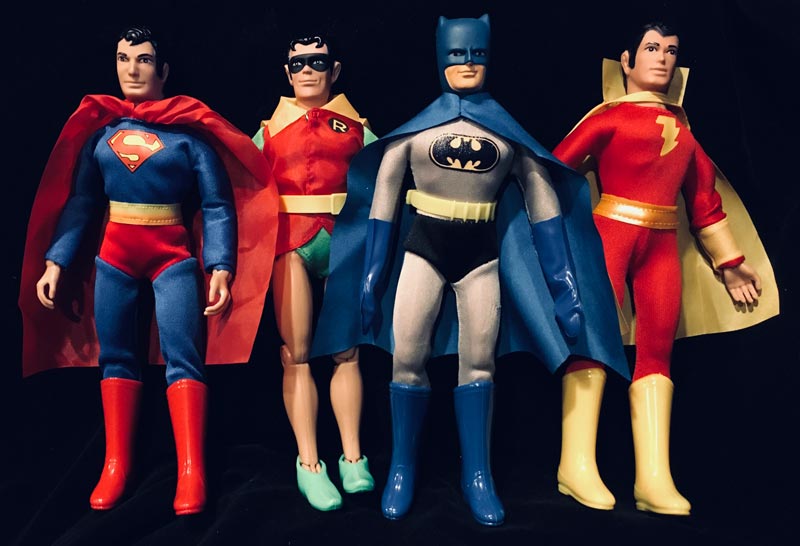
SEND IN THE CAPES
1970 brought the “Bronze Age” of comics, but the decade was a gilded age for colorfully clad adventurers on TV. Superheroes were everywhere – storming the airwaves through cartoons (Mighty Mouse; Underdog; Fantastic Four) and live-action programs (Adventures of Superman; Wonder Woman; Amazing Spider-Man), old and new. Super Grover and Spidey Super Stories featured on Sesame Street and Electric Company, respectively. Superman: The Movie broke the genre onto the big screen in 1978.
WORLD’S GREATEST SUPERHERO CARTOONS
During the 1970s, superhero cartoons were a dime a dozen and I watched them all. Hanna-Barbera’s Super Friends was a Saturday Morning institution, but didn’t make me a lifetime devotee to DC comics. No, apart from Batman, my loyalties have belonged to Stan Lee’s classic creations; cemented by the Marvel Super Heroes and Spider-Man cartoons from the 1960s.
I was very little when these cartoons aired, but, rotating Marvel luminaries (Captain America, Hulk, Iron Man, Thor, and Sub-Mariner) on a daily basis, the Heroes segments were a bulk indoctrination. Were these cartoons a rock-bottom low for the “limited” movement – hampered by disjointed storytelling and astonishingly crude “animation?” Oh, yeah. But what did it matter? The vivid artwork – copped directly from pages illustrated by comic greats Jack “King” Kirby, Bill Everett, Gene Colon, etc. – was cool and exciting! The jaunty jingles for each hero were distinct and irresistible! It was literally impossible not to sing along.
Spider-Man was a more traditional, if still crudely drawn, cartoon that variably adhered to the spirit of the parent Lee-Ditko–Romita era books; mixing faithful impressions of key characters and arch-nemeses with baffling bastardizations of others. Between the spasticatchyjazzy music and shameless, repetitive recycling of action sequences, the show helped make Spidey an all-time favorite. Even now, the act of watching the MCU “wall crawler” sling from skyscraper to skyscraper as I’d seen the character do decades earlier provokes nostalgic (but manly) tears of joy and unconscious, sympathetic action movements (“thwip, thwip”). Excelsior!
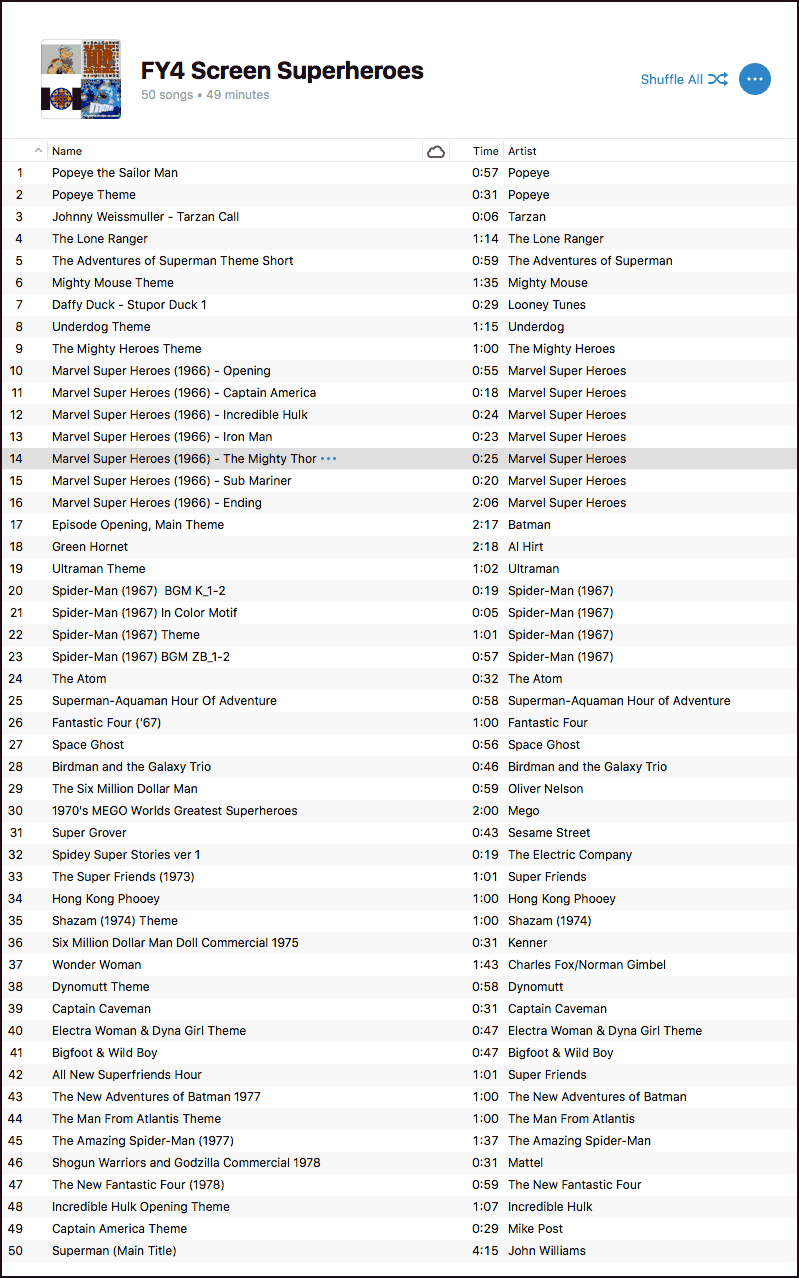
…or enjoy it right here…
HULK SMASH PUNY PRIME TIME TV!!!
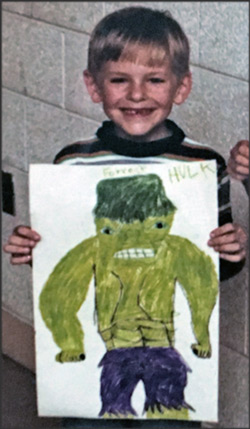
With only one TV at home, opportunities to watch Marvel heroes when they hit prime-time in the late ‘70s depended on 3 conditions: no options elsewhere on the dia; Mom’s feelings toward the actors; and the probability of Dad – a vocal adversary of fantasy/fiction – falling asleep before show time. Thanks, no doubt, to the presence of nice guy veteran actor Bill Bixby, The Incredible Hulk slipped through with regularity.
Not yet a comic collector, I knew “Ol’ Greenskin” from cartoons, toys, coloring books, halloween costumes, etc. Being a self-conscious, socially awkward little bully magnet, watching live-action Hulk smash the small screen was huge. Huge! …Relating to the idea of instantly becoming “the strongest one of all” when screwed with was a no-brainer (“…You wouldn’t like me when I’m angry”).
DOC (DAVID) BANNER – BELTED BY GAMMA RAYS
Many retcons were enacted to bring Hulk to TV. In most cases, it’s customary to compress stories when adapting literary works for screen. Here, however, the changes had more to do with money, technology, and pointless spite than anything else…
Exhibit A: Hulk’s mythic strength was downgraded to feats that star Lou Ferrigno could’ve believably managed without performance enhancing gamma radiation. I get it. They had to tone-down the most fantastical elements of the character. Even if money was no object, a comic-accurate Hulk wasn’t possible with the technology available at the time.
Exhibit B: The origin story was changed to attribute Hulk’s transformations to a lab mishap in lieu of a bomb test. Last I checked, the cold war was still on in 1977, but ok. Simulated gamma explosions and staged desert military battles would’ve proved too pricey as well.
Exhibit C: Comic lore was eschewed in favor of plots in the Fugitive/Kung-Fu vein… “Wanted for a crime he didn’t commit,” David Banner drifted from town to town and became embroiled in the personal lives of people suffering the torments of disposable villains. Obviously, the show went off formula when the hero (cue Bixby’s glass-eyed “Oh face”) transfigured into a paint-slathered, shaggy-wigged champion body builder; flexed, growled, and tossed some common goons around. In comics, Hulk squared-off against similarly overpowered super-villains, but, again, that would’ve been impossible to replicate in the late ’70s.
Exhibit D: The name of Hulk’s alter-ego was changed from “Bruce” to “David.” What..? Why??? It’s such a petty detail, but it bothers me because it’s so damned stupid. Did CBS execs think the name sounded too Australian for U.S. audiences? Ugggh. Whatever.
BAM! BAP! BOFF! KRUNCH! KAPOW!!!
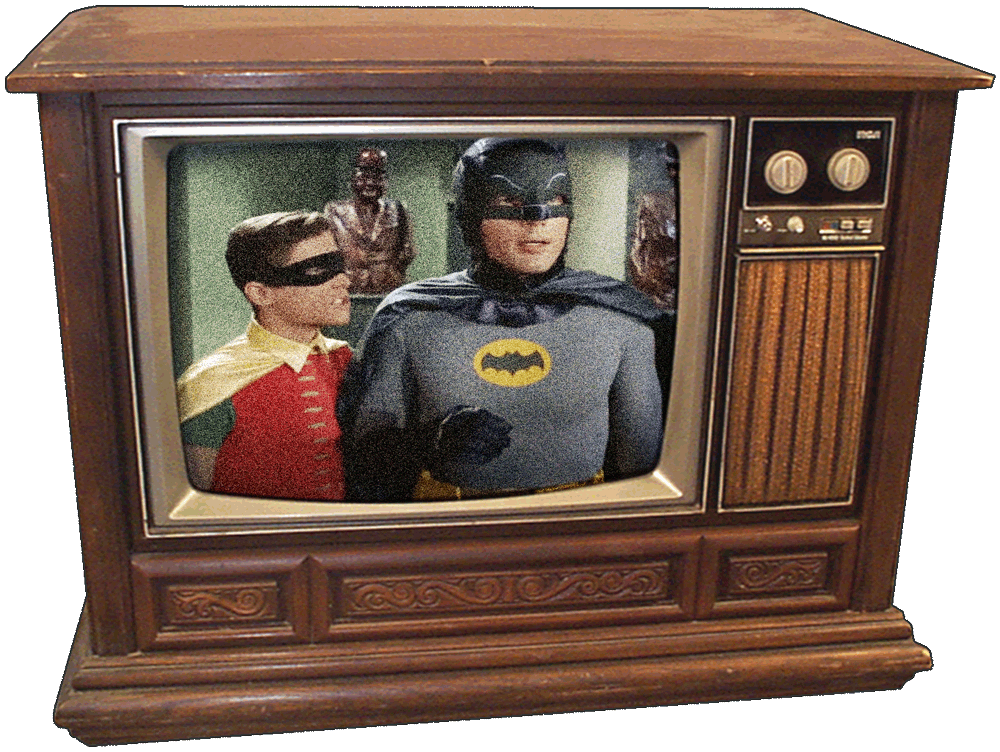
As much as Marvel heroes captivated me, nothing matched the sheer mania stirred by the ’60s live-action Batman TV show.
Tuning-in most every day at that “same bat time” to that “same bat channel,” I sang along and acted out the animated main theme sequence. I bounced- off walls, couches, and floors! I scoured the hallway wardrobe for any items that could pass for Batman’s boots, cape, and cowl to wear while fighting off imaginary hordes of henchman (“POW!”). Everything about the show was awesome… The swirling horn motifs and swinging surf guitar riffs! The cartoonish overacting and goofy dialogue (“You…filthy criminals”)! The saturated colors, dramatic camera attitudes, and silly plot conveniences! …Julie Newmar in a painted-on cat suit (smile). I was all in.
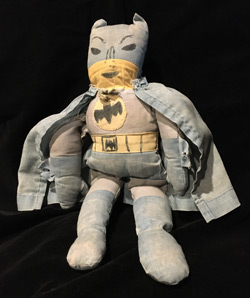
The “Dynamic Duo” were my most prized Mego dolls. I had a toy Batmobile. At one point, I started scrawling Batman…everywhere. Sometimes I chose acceptable surfaces like scrap paper. Other times, I drew on…well, unacceptable ones (keepsake boxes – “OUCH!”; hallways – “OOOF!”). My bad.
SATURDAY MORNING’S ALRIGHT FOR FIGHTING (OVER THE TV)
Like any other kid, I loved cartoons and developed strategies for ensuring maximal viewing very early on… As a toddler, for example, I pushed my crib away from the wall to my folks’ bed, climbed down, and went downstairs for the start of Saturday morning cartoons.
You might ask “…Why not sleep-in and stream ‘whatever’ when you got up?” It was the savage ‘70s. “On Demand” didn’t exist. Prior to the 1980s/VHS revolution, shows had to be watched according to a set schedule or be missed. If that wasn’t barbaric enough, because we had no remote, my siblings and I had to physically go to the large wooden console TV and manually turn chunky dials to change channels. Between my rudimentary reading skills and shifting programming schemes, tracking choice ‘toons was challenging but I managed (CLICK CLICK CLICK).
THE NEW DARK AGE
We only had about eight functional channels back then but most ran cartoons at some point during the day. I preferred repackaged golden age “shorts,” but often settled for the haphazardly produced product of the day – which happened to rest squarely at the apex of animation’s “dark age.”
Why “dark age?” Because whatever nostalgic memories Gen-X hold for the heyday of Saturday morning cartoons, the shows were almost uniformly dreadful. After the old Hollywood System fell in the late ’40s-‘50s, the surviving studios slashed budgets and weakened/dumped their in-house animation divisions. The animated theatrical short faded in balance with the rising demand for original Television content. Innovation, whimsy, and excellence were out; fast, cheap, and comparatively stale “limited animations” were in.
INDISCRIMINATING TASTES
Reconsidering shows from the ’50’s & ’60s, it seems that some studios at least tried to leaven the diminished animation standards with hip (Bullwinkle) and thoughtful (Charlie Brown specials) social commentary. The Flintstones was an analogue for modern class warfare and technology. Scooby Doo was loaded with veiled psychedelic tropes… Think about it – 3 “straight” kids meandering the country in a VW van with an unkempt, munchies obsessed hippie and a talking dog)? If TV’s had “Smell-O-Vision,” you’d have to open your windows to vent the stank whenever the van doors popped open.
By the time I arrived on the scene, the medium had unfortunately devolved into a guileless wasteland of homogeneous efforts. I watched, of course – they were cartoons, after all. The lens through which we evaluate our world changes a lot in the time between 4 and 49 (ideally). Back then, using Fat Albert as an example, ear worm theme songs, passingly colorful characters, and clunky catch phrases (“Hey Hey HEYYYYYYY”) were hook enough. With Laugh-A-Lympics, Hanna-Barbera turned out their deep drawer of properties past (Yogi Bear; Snagglepuss) and present (Grape Ape) to lure kids with an “all-star” lineup. Still, my tastes weren’t indiscriminate. I recognized that the pallid “ALL NEW” takes on classic characters (Tom & Jerry; Popeye) were basically unwatchable in comparison to the originals and steered away.
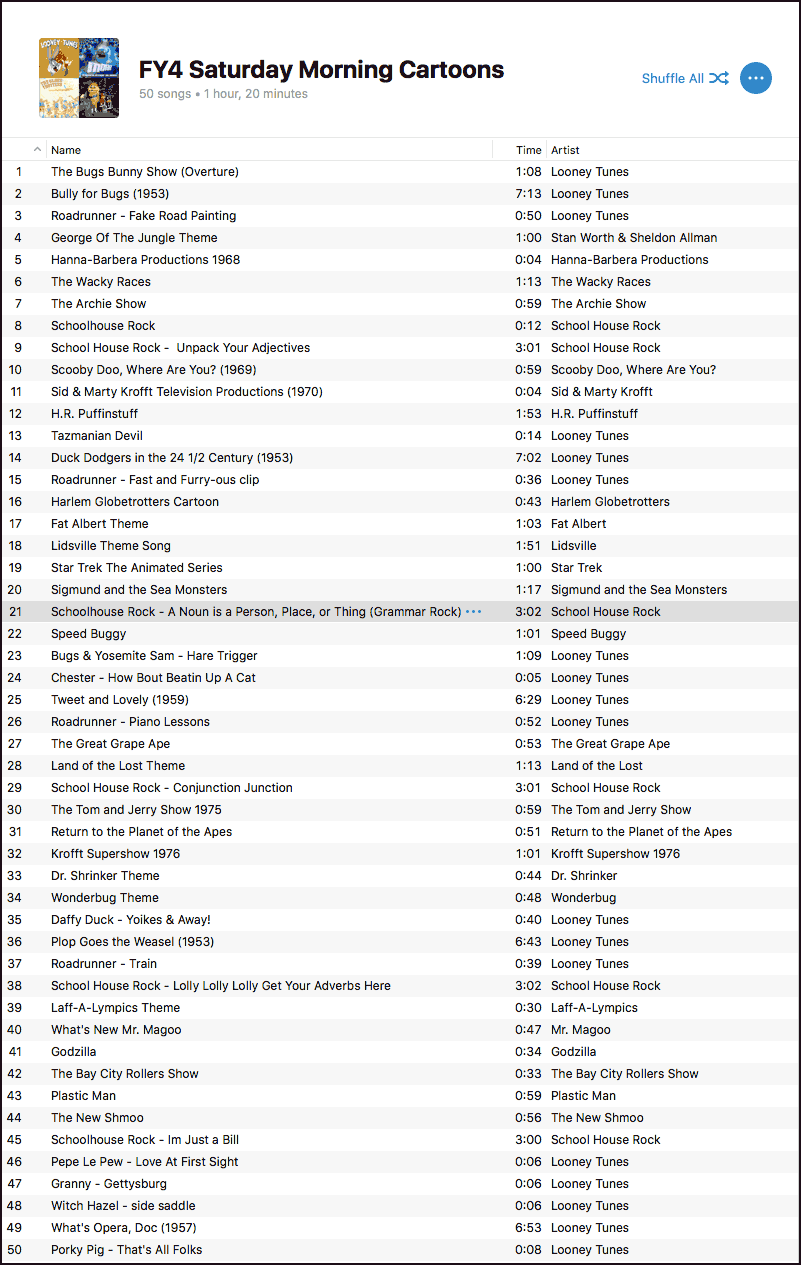
…or enjoy it right here…
M.I.C.K.E.Y.M.O.U.S.E. M.I.A.
Strangely, the Walt Disney Company abstained from producing Saturday morning cartoons.
Struggling financially like so many holdovers from the earlier era, the “House of Mouse” had turned almost exclusively to producing feature-length films (Pete’s Dragon; the Rescuers) by the ’70s. Stray reruns of the classic Mickey Mouse Club aired sometimes, but Disney mainly leaned on licensed merchandise (books; records, etc.) and theatrical re-releases (Fantasia) as means of maintaining legacy properties. Their only active TV presence, as far as I can recall, was NBC Sunday night’s Wonderful World of Disney; but still, it focused on live-action event films (20,000 Leagues Under the Sea). Animated classics like Snow White, Dumbo, or Pinocchio only rotated-in on special occasions. I seldom recall seeing their classic cartoon shorts. Could the industry have changed for the better if Mickey, Minnie, Donald, and Goofy had figured prominently in the Saturday morning equation? I can’t help but think so.
I KNEW I SHOULD HAVE TAKEN THAT LEFT TURN AT ALBEQUERQUE!
Given a choice between contemporary cartoons and the classics, I opted for the zany and wildly surreal series from Hollywood’s golden age… Fleischer-Famous-Paramount’s Popeye and Casper the Friendly Ghost. Lantz-Universal’s Woody Woodpecker and Chilly Willy. MGM’s Tom & Jerry and Droopy. Disney cartoons were awesome when I could find them. Of course, my all-time favorites were/are Schlesinger-WB’s Merrie Melodies/Looney Tunes.
What made those works so special? For one, unlike dark age creators, who saved money and aggravation by dumbing things down and pandering to overreaching parent groups, the old guard – Bob Clampett, Fred Quimby, Tex Avery, Robert McKimson, Friz Freleng, Chuck Jones, etc. – had relative free-reign to innovate and self-entertain. They sparked imaginations with raucous, rule-free universes, canonizing countless absurd sight gags (impossibly long limos; body shaped holes in walls) in the process. Of course, creators weren’t totally free from censorship; the Hays Code effectively neutered the Fleischer’s Betty Boop in the 1930s. But, so long as things didn’t get too sexy and the violence remained bloodless, they were generally permitted to bully, bludgeon, bisect, blow up, blow apart, maul, mash, mutilate, squeeze, smash, and scare characters skinless to their heart’s content.
PURE IMAGINATION
Most importantly, the classics were also deceptively sophisticated and respected the intelligence of their audience. Where artless “dark age” products narrowly targeted simple minds with lame dialogue, labored narratives, and primitive images, golden age masterworks aimed higher so as to entertain a much broader base. Knowing that animation is a visual medium, makers of classic theatrical shorts cleverly conveyed story through a combination of dynamic musical arrangements, beautifully rendered art, relatable characterizations, lightning quick sight gag barrages, and winking, “meta” references (“Ok, break it up, son. Joke’s over, hear?”). Golden age cartoons didn’t talk down or waste precious time with needless exposition. They challenged patrons to use the power of observation to connect the dots for themselves.
What’s more, golden age shorts were great because of their pure escapism. Sure, like most popular media forms from that era, many shorts made during wartime, served to promote American propaganda (“Any Bonds Today?”). Disney traded extensively in, well, “Disneyfied” morality tales (Cinderella; Bambi). But, generally speaking, the purpose of those golden age cartoons was pure entertainment. Plots were a pretense that only existed to set up endless gags. Scenarios were just vehicles for exploring the many inventive and delightfully brutal ways Bugs Bunny, Tweety, and Roadrunner could find to foil Elmer Fudd, Sylvester, and Wile E Coyote in the course of seven minutes; to demonstrate how much abuse Popeye could take before squeezing open a can of spinach; and provide Droopy with ample opportunities to break the “4th wall” with droll exclamations (“…I’m happy”).
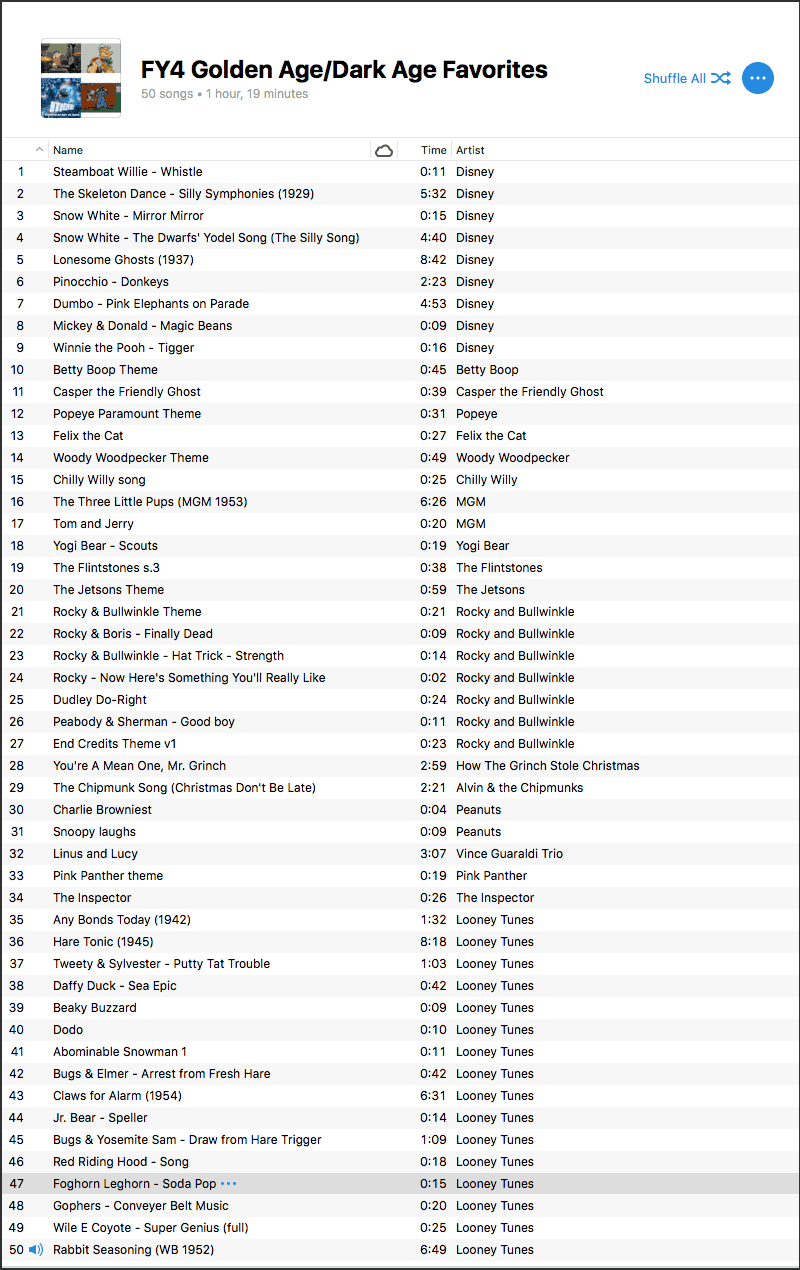
…or enjoy it right here…
YOU’LL SHOOT YOUR EYE OUT, KID!
Ok. I understand the argument that these cartoons may be too profoundly violent to not be desensitizing, particularly for young viewers. It’s also probably for the best that all non-Anglo European stereotypes depicted in the old cartoons have been tucked away from newer generations who can’t likely reconcile the context of their creation. On these points, I leave the following meditations on the importance of any level of nurturing guardianship or guidance…
Employing a parenting style that resided somewhere in the vast middle-ground between the smothering, overbearing modern helicopter parent and the indiscipline of feral dogs, my Mom and Dad managed to impart to me a sense of right, wrong, and empathy. They didn’t hover, yet they knew their kids’ viewing habits enough to make certain we understood life and death 101… You know, fundamental truths of life, like “fall from a cliff and you will die” “shoot someone in the face and they will die,” and “anyone who swallows dynamite will surely die.” I won’t lie – I loved the ultra-violent cartoons. It was absolutely cathartic as hell to watch cartoon avatars for life’s jerks get the tables turned on them with hilariously extreme prejudice time and time again, but the line between real life and fiction never looked thin or blurred. Anyway… Something to think about.
THE CURIOUS CASE OF BUGS BUNNY
Even as a young child, variances in certain characterizations were hard to miss. Using Bugs Bunny as an example, I’d always assumed that his evolution was linear and easily traced, but it wasn’t. His appearance differed a lot from cartoon to cartoon early on, but he was also kind of schitzo: a mean-spirited bully in some shorts; an endearing trickster in others. It was hard to track because there was no consistency moving between black and white and color shorts. Well… Apparently, four different creative groups were churning out monochrome and Technicolor Looney Tunes and Merrie Melodies cartoons at Warner Brothers at the same time! The groups operated independently with different budget mandates and under the distinct visions of their respective editors. That’s just insane! No wonder the characters were so changeable.
THE MAN OF A THOUSAND VOICES
From the outside-in, a nickname like “Man of a Thousand Voices” may seem like hyperbole, but Mel Blanc – inarguably the most important, prolific, and influential voice talent of all time – earned it. Best remembered for his work with Warner Brothers, Blanc provided the definitive voices for Bugs Bunny, Daffy Duck , Porky Pig , Sylvester, Tweety, Yosemite Sam, Foghorn Leghorn, and countless others for the near entirety of a six decade career.
A broad overview of his extensive character/vocal effects work reveals a talent that bridged radio to television (The Jack Benny Program); rival production companies (WB; Lantz; MGM; Disney; Hanna Barbera); and bawdy black and white instructional films for the U.S. military (Private Snafu) to vapid ‘70s Saturday morning kid schlock (Captain Caveman). In 1944, he changed norms for voice actors and screen credits – improving the visibility of his peers and all who came after. He was the original voice of Woody Woodpecker (“Guess who?”) and Barney Rubble (“Uhh huh huh huh”). He was in Duck Dodgers (“I claim this planet in the name of Mars! Isn’t that lovely?”) and Buck Rogers (“Biddy biddy biddy biddy”).
ALL I KNOW OF HIGH CULTURE COMES FROM BUGS BUNNY CARTOONS
…And now a few closing words about WB’s MVC (most valuable composer), Carl Stalling.
In the early 1920s, young composer/orchestra leader Carl Stalling was recruited by a fledgeling Walt Disney to produce music for animated shorts he was developing. Brief but fruitful, the partnership on the “Silly Symphonies” series heralded two revolutionary and natively complimentary advancements. First, Stalling’s “Mickey Mousing” process served to align onscreen action with the music score. Second, the metronomic “click track” (also known then as a “tick system” or “tick track”) improved pacing – aiding musicians in the task of maintaining perfect tempo.
In 1936, Stalling went to rival Schlesinger-Warner Brothers, where he perfected his craft while serving as musical director for a multitude of Merrie Melodies and Looney Tunes shorts until the late ‘50s.
Echoing sentiments shared by film critic Leonard Maltin in a video I watched yesterday on YouTube*, I’ve long viewed Carl Stalling’s scores as stealth mini-clinics in music theory. They imprinted centuries of knowledge onto unknowing viewers via osmosis. He was so integral to the cartoons he worked on, it’s hard to tell from the outside whether the stories informed the scores or vice versa. With the full might of a massive in-house orchestra at his command, Stalling deftly leveraged Warner Brothers’ expansive music catalog; seamlessly weaving passages from existing compositions into epic original scores. He was a master of meter and adept arranger, brilliantly bonding quotes from classical works, jazz, opera, show tunes, etc. to his own material. His approach set the standard for music in animated shorts for decades.
* And you folks probably thought I didn’t know how to properly document sources (smile).
WIDER LINES OF INFLUENCE
Tangentially, I can see how Stalling’s facility for fusion might have influenced the ascent of later music forms, directly or otherwise. ’80s Pop producers repurposed (corrupted) the click track to keep “undisciplined” (feel) players robotically on the beat (kill their soul). Surely, the symphonic/progressive rock acts from the ’70s (Yes; King Crimson) would’ve been exposed to golden age carftoons in their youth… Did Stalling and the composers at MGM somehow inform the work of early industrial bands (Cabaret Voltaire; Ministry) through their inventive use of “stinger” sound effects?” Mmmmmmmmmm…could be.
…Have different angles to consider or comparable stories to tell? Please… Start a conversation in the comments section!

